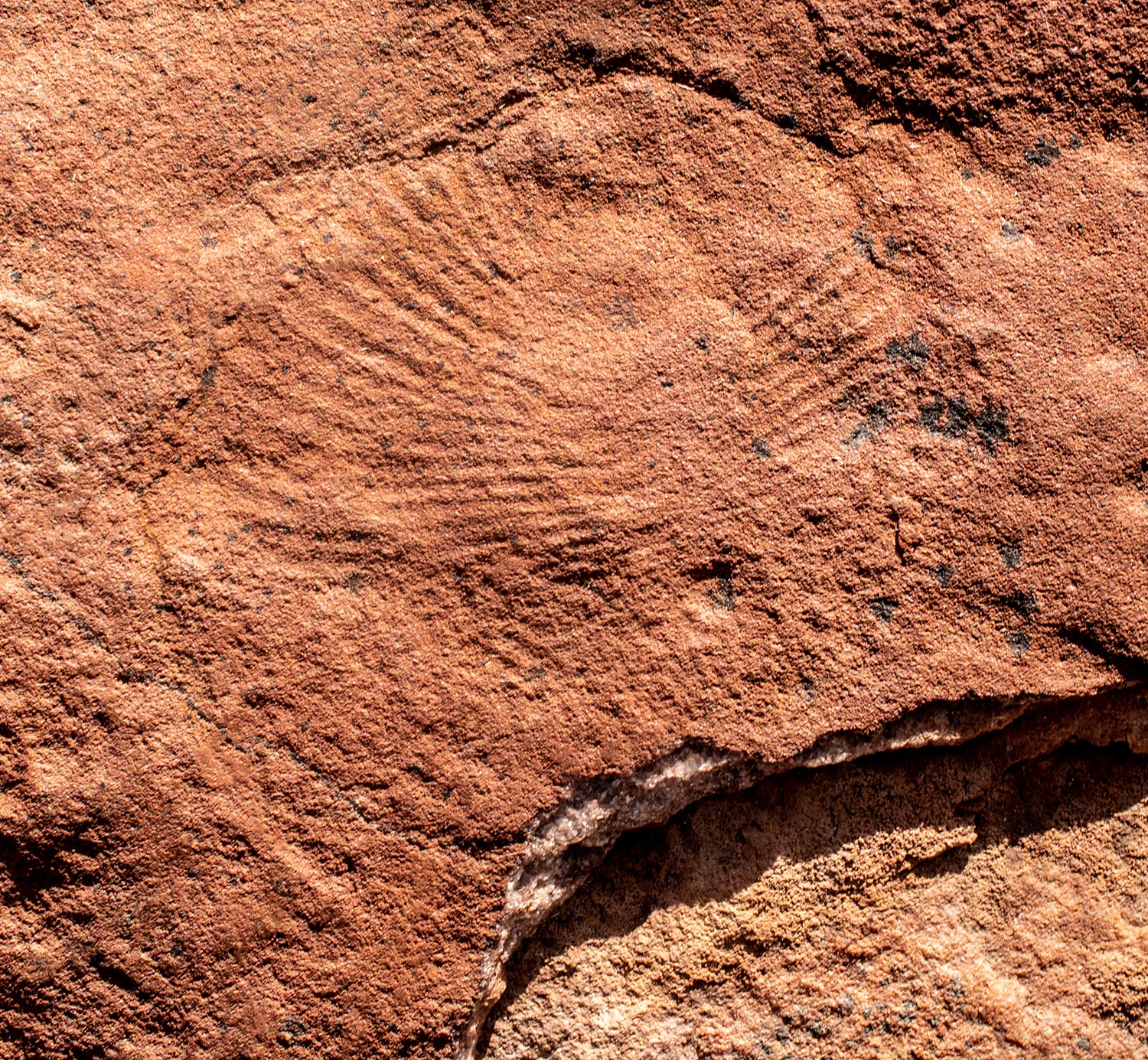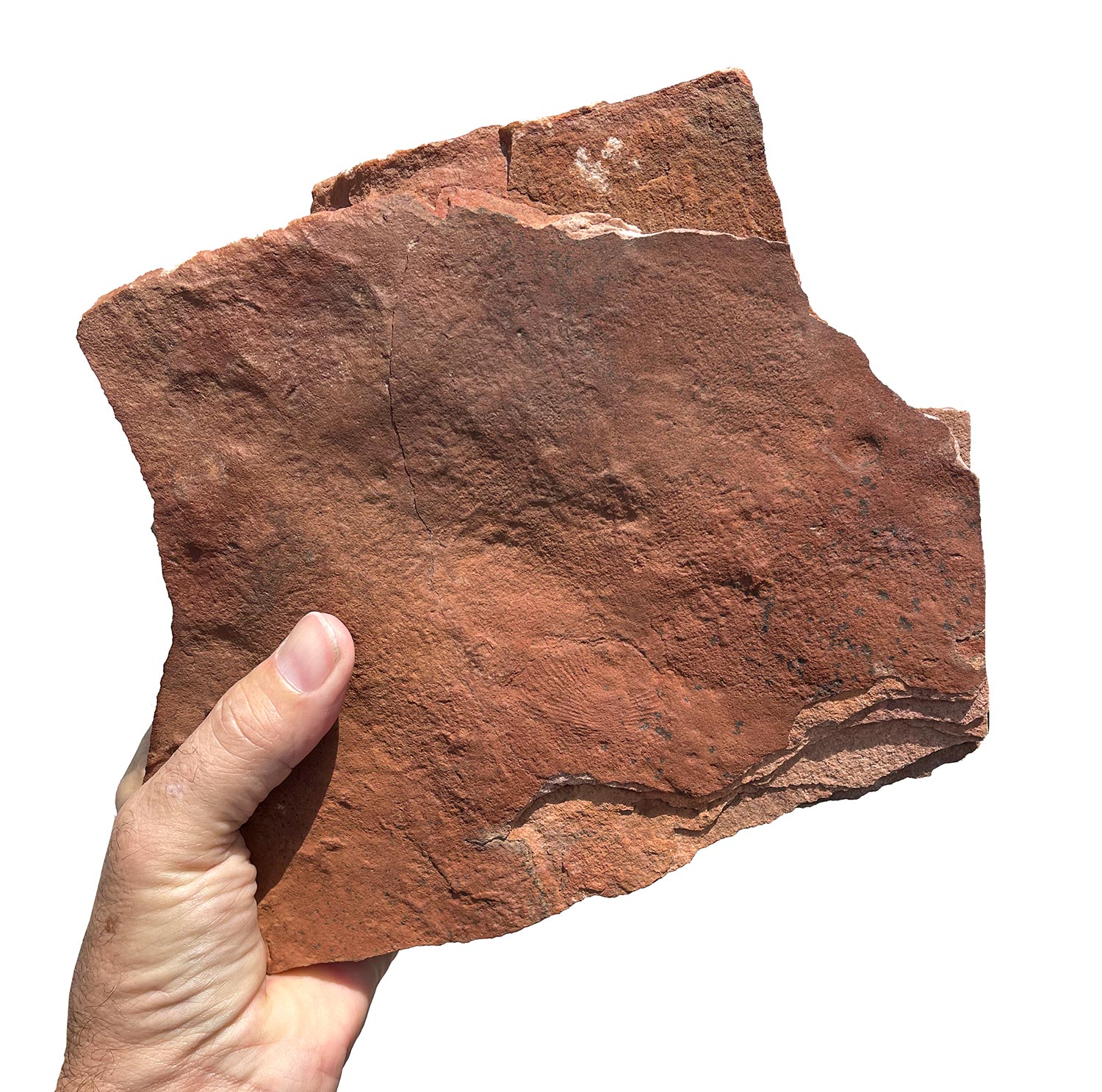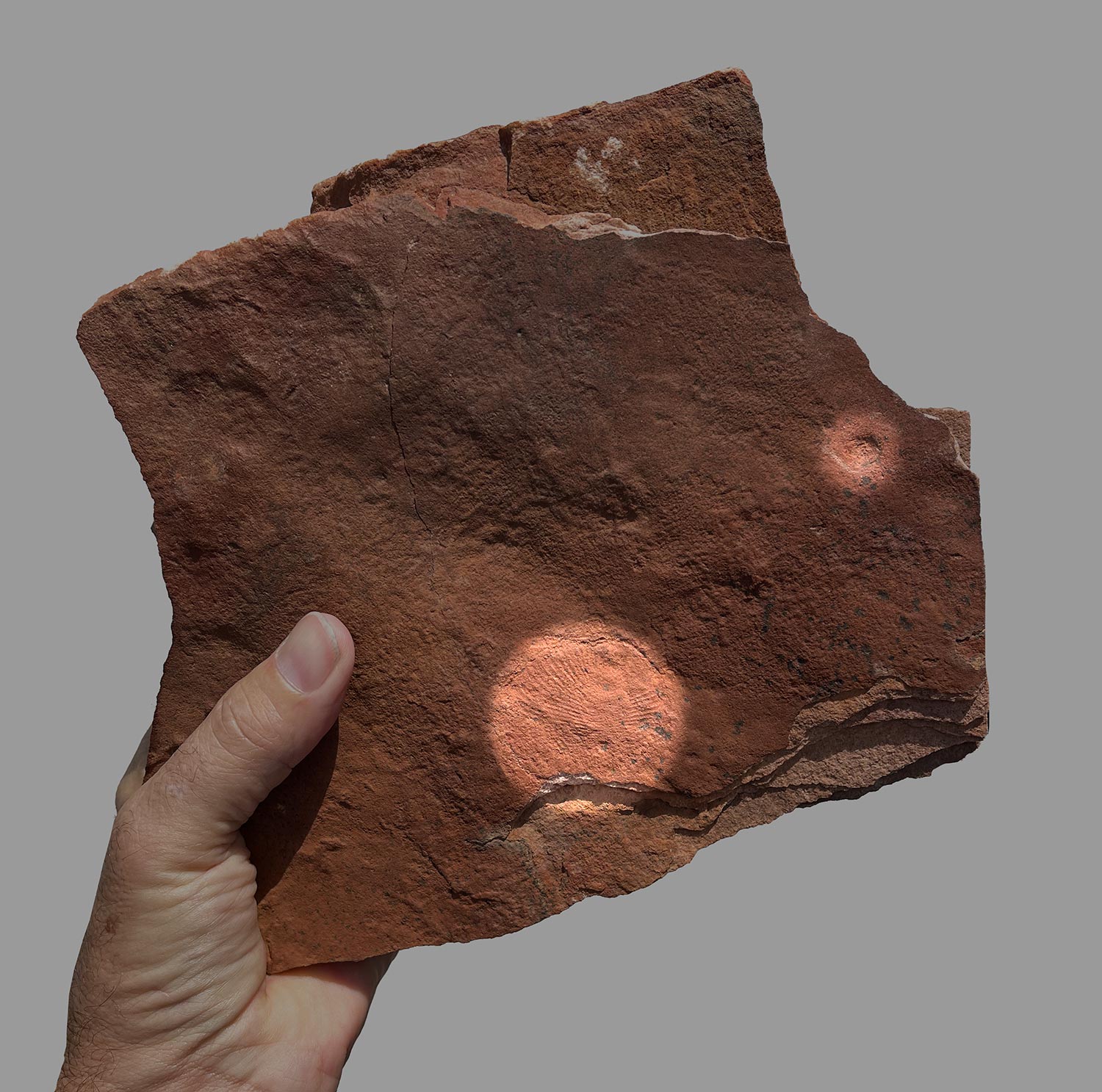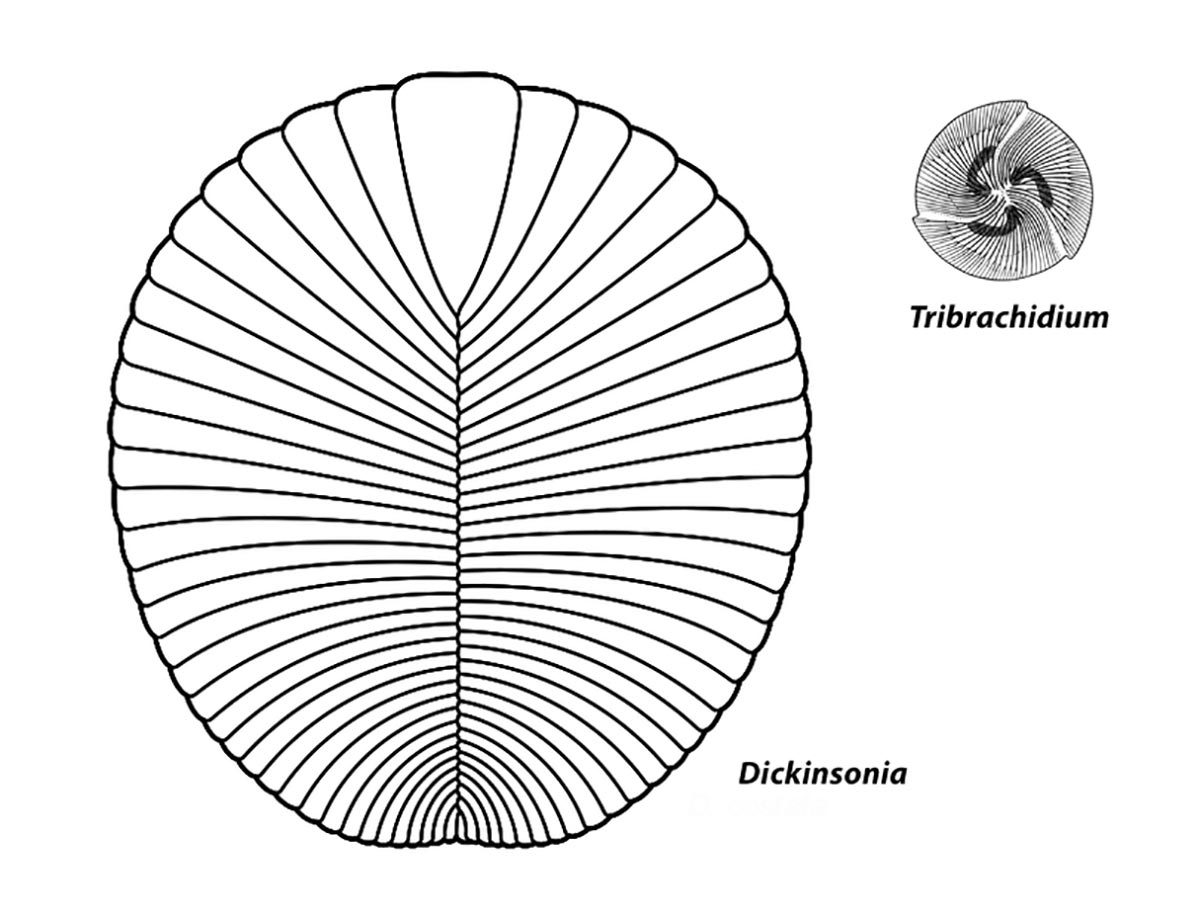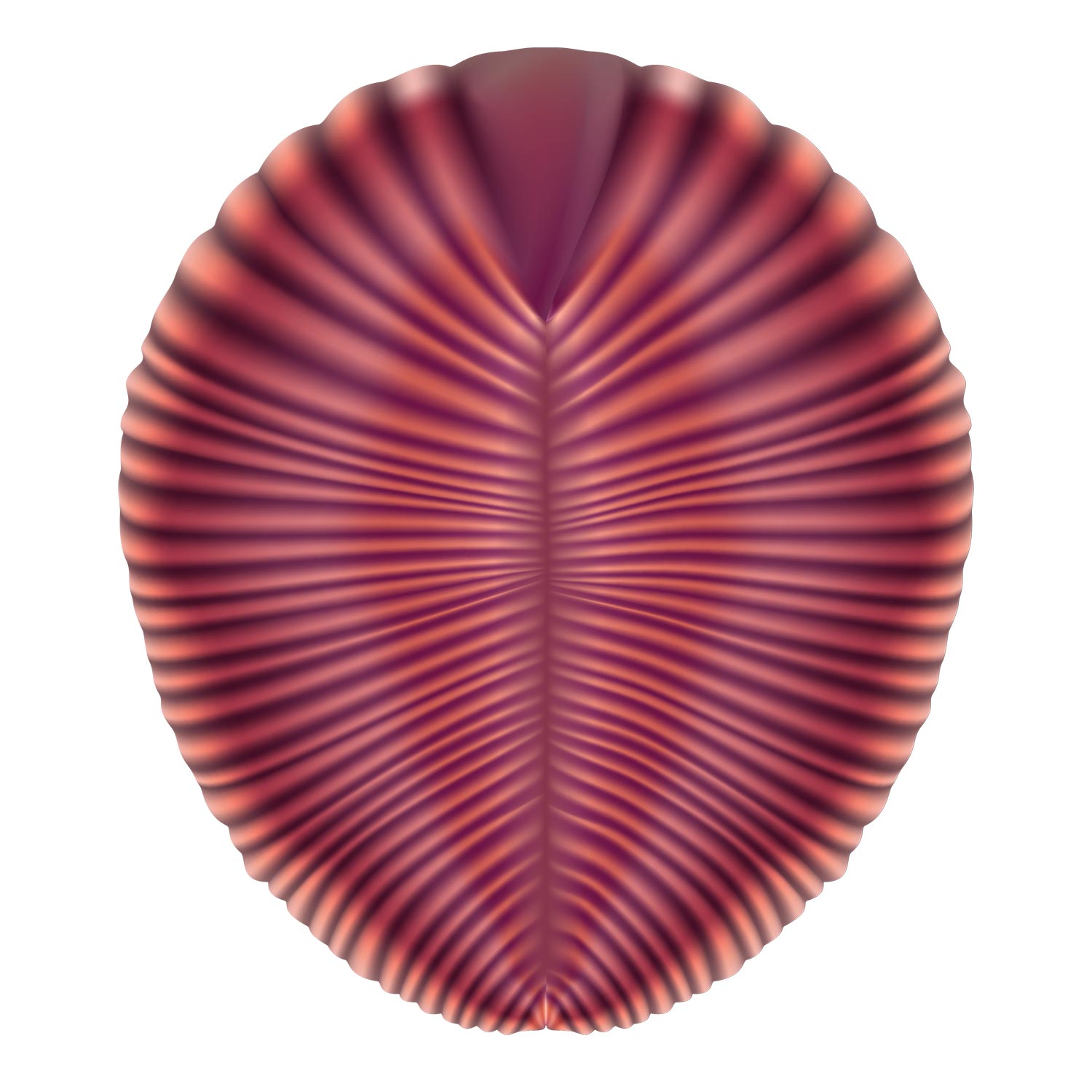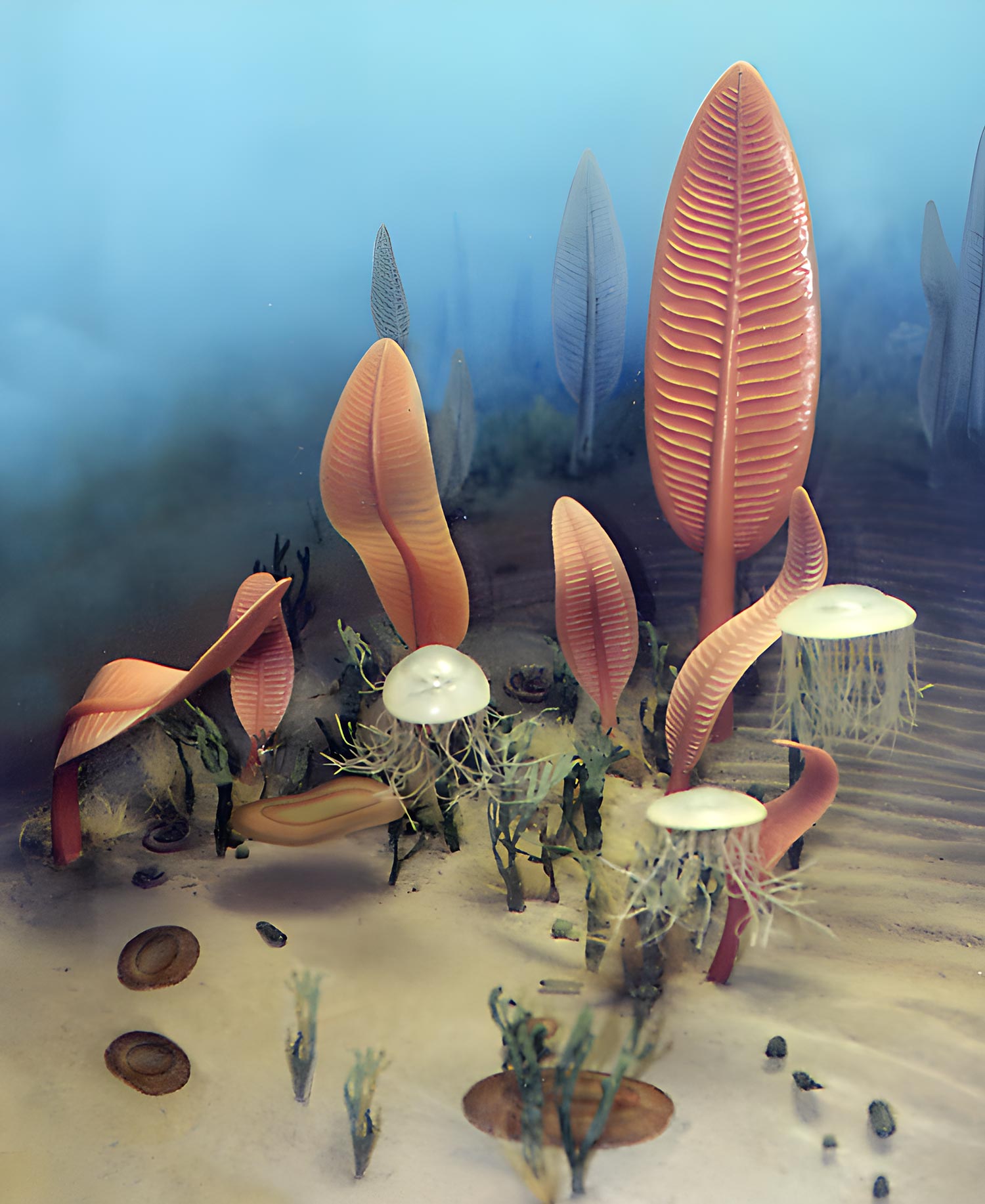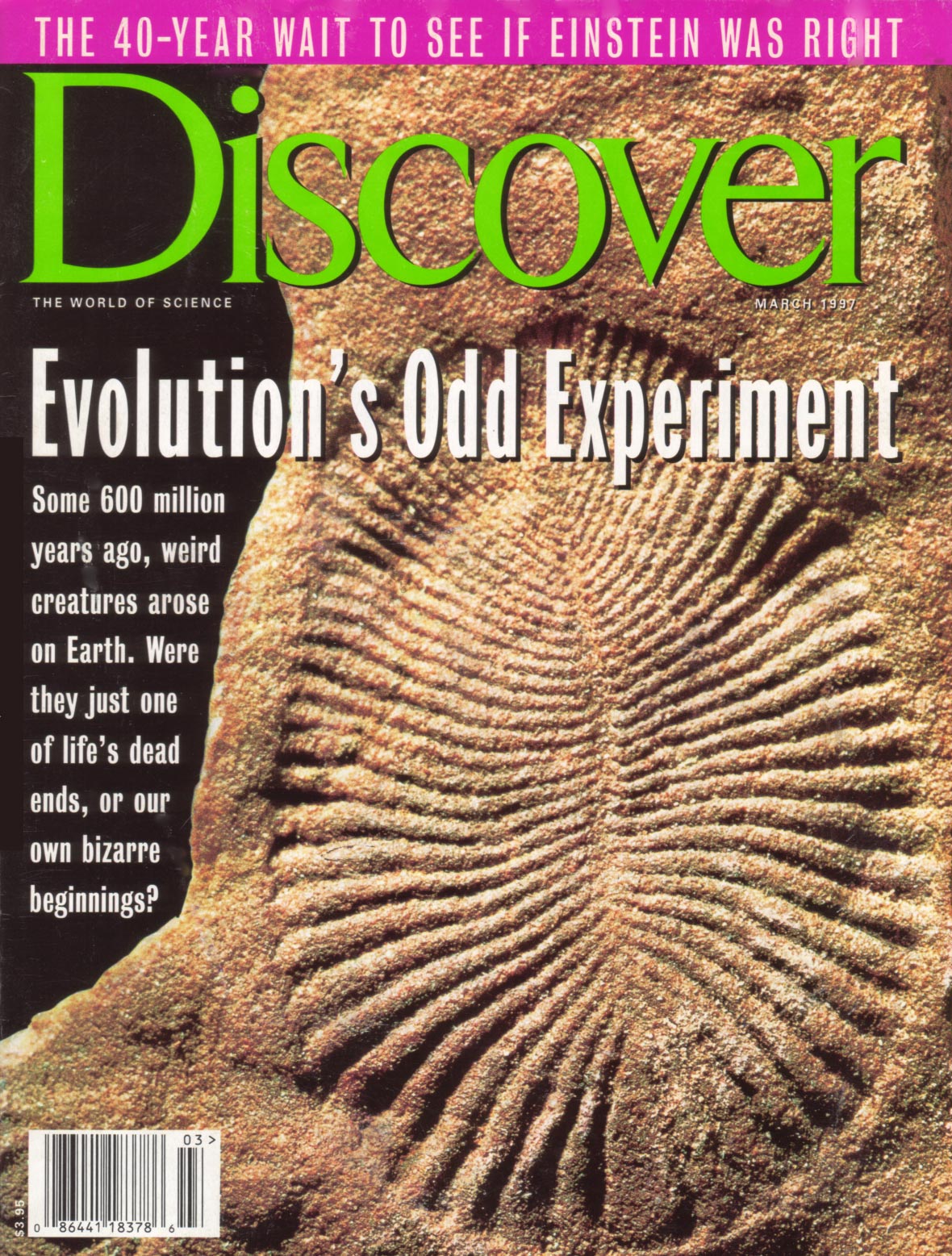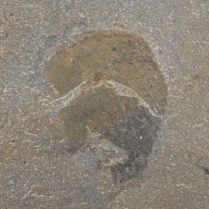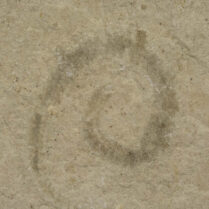Description
Dickinsonia costata with decayed Tribrachidium heraldicum
Late Precambrian (Ediacaran)
Rawnsley Quartzite
South Australia
Big 8.4 inch (213mm) slab with 1.6 inch (41mm) Dickinsonia and small 0.5 inch (12mm) decayed Tribrachidium. These can’t be collected anymore so this one comes out of an old academic collection. Otherwise, these Australian specimens are completely unobtainable. Slab is very heavy so contact us for shipping information.
Dickinsonia is a genus of one of the oldest macroscopic animals in the fossil record. It’s known from Precambrian-age rocks of Australia and Russia and is one of the animals we envision when we think of the Ediacara fauna. Yeah, it’s the one that looks like a fingerprint.
Tribachidium is a disc-shaped animal with threefold symmetry, hence the name “tribachidium” which means “three arms”. Its body is composed of three curved arms that radiate out from a central point, forming a triangular shape. The arms are lined with smaller secondary branches, giving the appearance of a feather or fern-like structure.
The exact nature of tribachidium is still not entirely clear, as it is not closely related to any living organism. Some scientists believe it may have been a type of filter-feeding animal, while others suggest it may have been a type of algae or a colonial organism. Early workers suggested a link to echinoderms because of the three-fold radial symmetry, much like the five-fold symmetry of modern echinoderms. However, because tribachidium is known only from the fossil record, much about its biology and behavior remains a mystery.
To see more examples of what a decayed specimen of Tribrachidium looks like, see: Hall, C. M., et al (2015). Paleoecology of the enigmatic Tribrachidium: new data from the Ediacaran of South Australia. Precambrian Research, 269, 183-194.

